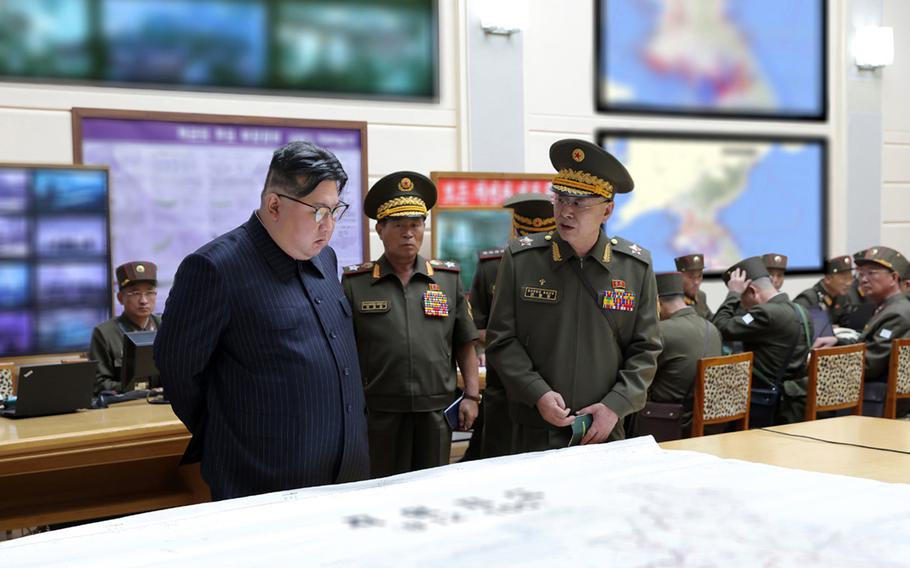
North Korean leader Kim Jong Un meets with senior military officials in this undated photo issued recently by the Korean Central News Agency. (KNCA)
(Tribune News Service) — North Korea fired several cruise missiles Saturday into the Yellow Sea, just days after it shot off a pair of nuclear-capable ballistic missiles in a show of anger against U.S.-South Korea joint military drills.
The missiles were fired from about 4 a.m. and the launch is being analyzed by US and South Korean intelligence agencies, South Korea’s Joint Chiefs of Staff said in a statement to reporters. Pyongyang had threatened punishment for U.S. and South Korean military drills, which ran for 11 days until the end of August.
North Korea on Aug. 30 test-fired two suspected short-range ballistic missiles for simulated nuclear strikes, saying it wouldn’t bow down to threats after the U.S. sent a B-1B strategic bomber to airspace off the peninsula for joint drills. After that missile launch, South Korea and U.S. mobilized about 30 aircraft including F-35 stealth fighters for exercises that including air-to-ground live-fire training.
North Korea has bristled at joint military exercises for decades, calling them a prelude to an invasion and nuclear war. Although North Korea is barred by United Nations Security Council resolutions from testing ballistic missiles, it faces no such prohibitions on cruise missiles.
Ballistic missiles fly in an arched trajectory at supersonic speeds and are unpowered on descent. Cruise missiles travel at subsonic speeds and can fly at low altitudes. They are maneuverable, making them harder to detect and intercept.
Pyongyang had already fired 26 ballistic missiles and two space rockets so far this year. They included four intercontinental ballistic missiles that could hit the US mainland. Kim Jong Un’s regime launched more than 70 ballistic missiles last year, a record for the state.
Kim has ignored U.S. calls to return to long-stalled nuclear disarmament talks. But he has been busy modernizing his arsenal of missiles and conducting tests of systems to attack South Korea and Japan, which host the bulk of U.S. military personnel in the region.
North Korea launched two short-range ballistic missiles into waters off its east coast on July 19 after the USS Kentucky stopped in Busan, in the first visit to a port in South Korea in about four decades by a submarine capable of firing nuclear ballistic missiles. Pyongyang fired two more a few days later when another nuclear-powered US sub arrived at a separate South Korean port to replenish supplies.
Those launches came after North Korea in July tested its Hwasong-18 solid-fuel ICBM. It flew longer than any of its other ICBMs and appeared designed to carry a multiple nuclear weapons payload, which increases the chances that at least one bomb could slip past interceptors and make its way to a target.
A solid-fuel missile could be deployed quickly and fired with little warning. Liquid-fuel missiles in general take more time to prepare as propellant is added to their tanks, making them vulnerable to attack before taking off.
With assistance from Sangmi Cha
©2023 Bloomberg L.P.
Visit bloomberg.com.
Distributed by Tribune Content Agency, LLC.